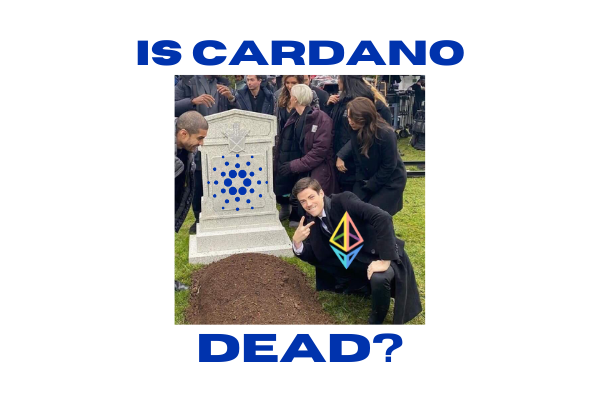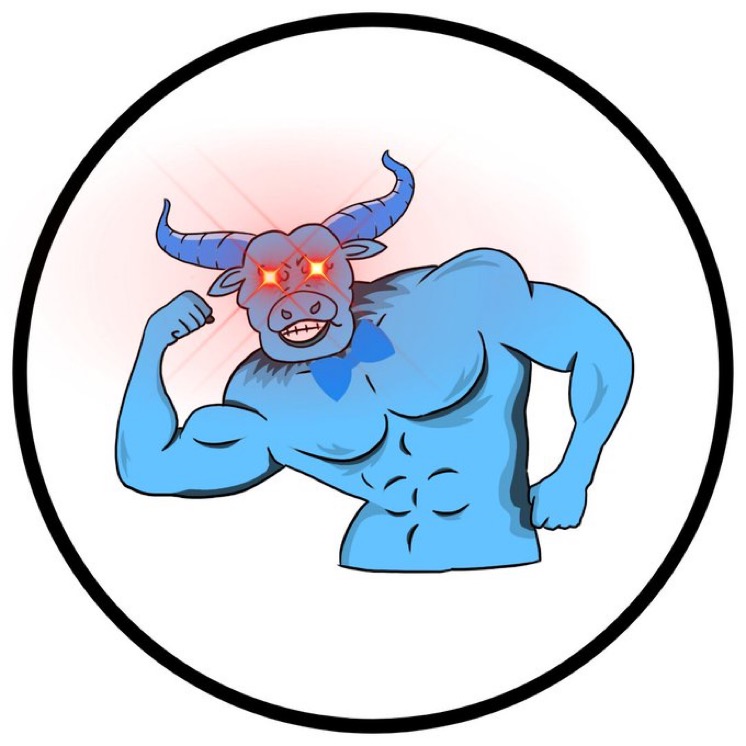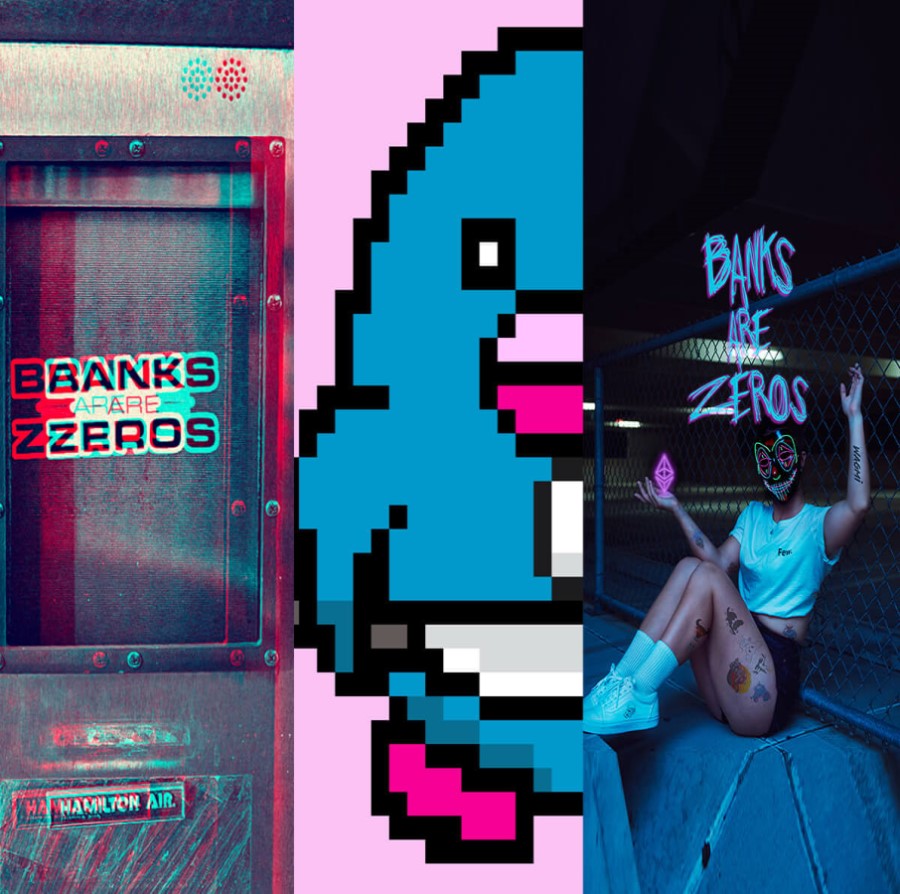Cardano is, at time of writing, the 7th most popular cryptocurrency by market cap of it’s native token, ADA. The coin has gathered much attention, particularly on Reddit and in retail investor circles, due in part to its low unit price. ADA’s price has continued to fall for almost a year despite the launch of smart contracts, prompting many to ask: is Cardano dead?
What Is Cardano?
Cardano is a proof-of-stake blockchain branded as an Ethereum-killer, and claims to solve many of Ethereum’s issues like high gas fees and low chain throughput. Unlike many so-called Ethereum-killer chains which simply fork the Ethereum Virtual Machine and tune its parameters to optimize the blockchain trilemma for speed, Cardano is an entirely different architecture.
Cardano uses a variant of the UTXO model to hold balances (similar to Bitcoin), as opposed to Ethereum’s account model. For much of its history it did not support smart contracts, with “when Cardano gets smart contracts” becoming an idiom like “when pigs fly”. Smart contracts launched in January 2022, to mixed reception.
Cardano smart contracts are written in a variety of scripting languages which wrap the underlying programming language Haskell. Haskell claims to be fundamentally more secure than Ethereum’s Solidity and Vyper languages. The language is notoriously difficult to learn and use, however, presenting a significant barrier to new adoption.
One of the chain’s main selling points is the academic research backing it. This research is conducted by IOHK, a research and engineering body founded by Charles Hoskinson and Jeremy Wood. This body serves a similar role to the Ethereum Foundation, driving the technical progress of the blockchain itself.
How Many People Are Using Cardano?
Currently, there are just over 100,000 active addresses on Cardano.
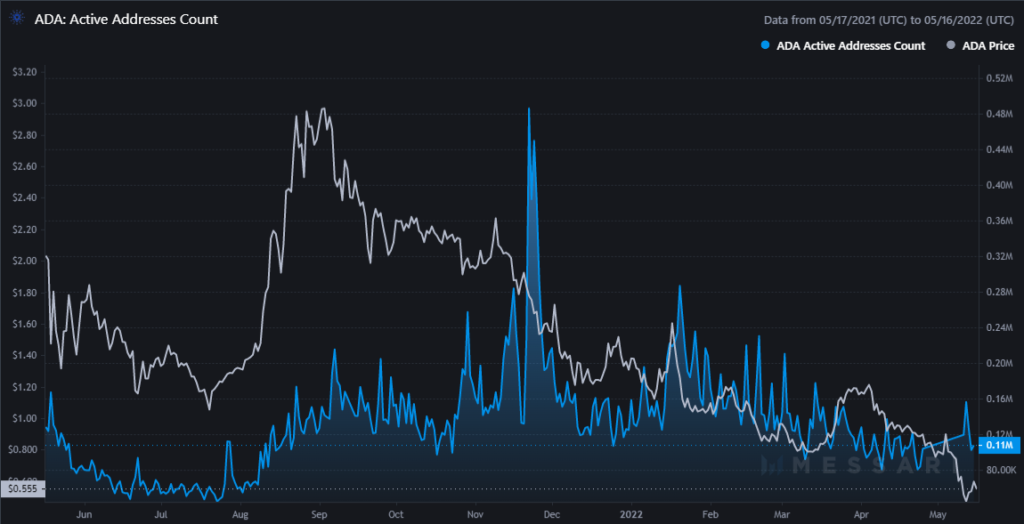
This is compared to 550,000 on Ethereum, and over 1 million active addresses on Bitcoin. The daily transaction count for Cardano is currently hovering just above 100,000.
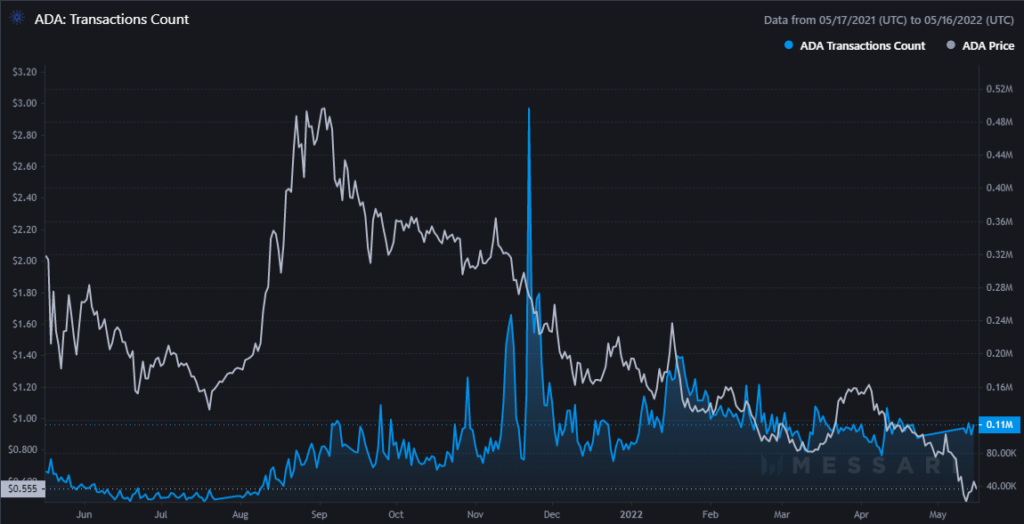
Overall, the transaction and active address counts indicate that activity is steady, but not growing. Other important signals, such as new wallets per day and staking percentages, continue to decline in a bearish signal.

How Many People Are Building On Cardano?
Few protocols are actually launching on Cardano.
This metric is a little more shrouded. One often-cited graph shows Cardano developer activity, as measured in Github code commits, to outpace all other blockchains. Frankly, this seems unrealistic. Cardano has a much smaller user base and developer base than Ethereum.

What I suspect is happening is either A) the metric was only looking at core blockchain source code commits (still unlikely that Cardano is #1, due to dev activity around the Ethereum proof-of-stake merge), B) it was scraping Github for commits written in the smart contract language of each chain, or C) the numbers are just plain wrong. Solidity, Vyper, and Bitcoin Scripting Language are not commonly used in other contexts. Haskell is a general purpose language, and a search for Haskell code will produce mainly non-blockchain results.
This just-released chart from a16z paints a much more realistic picture.
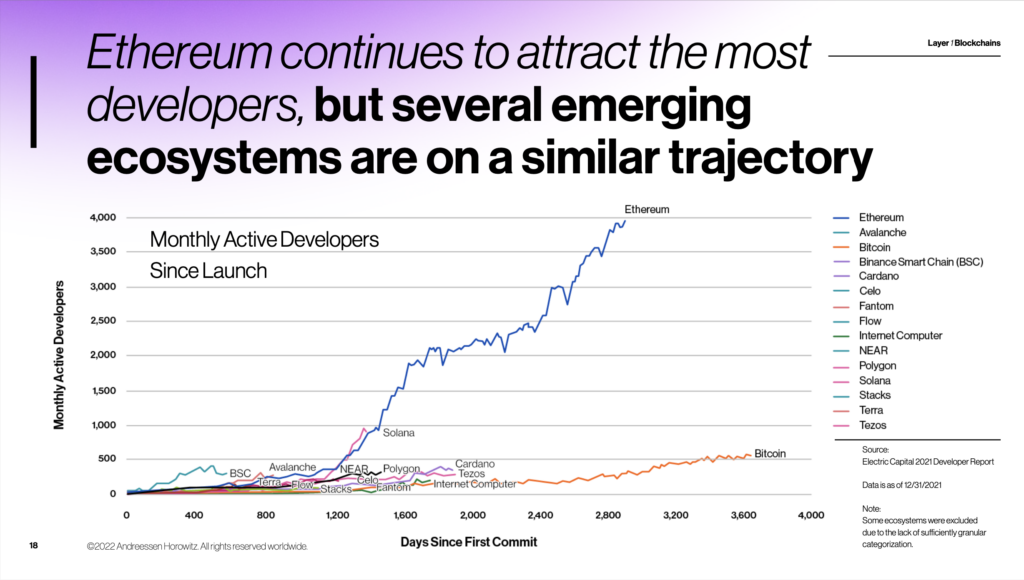
The truth also starts to show when looking at Cardano DeFi. This data is much grimmer.

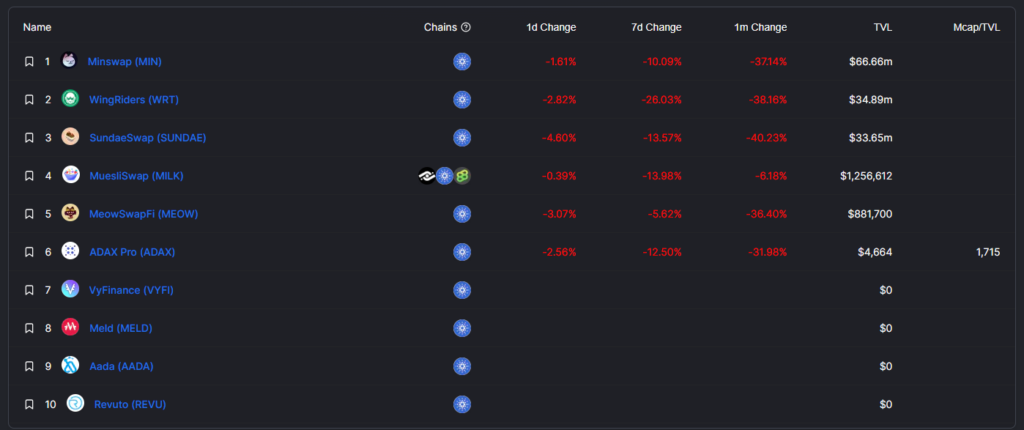
Only 6 DeFi protocols have deployed – only 3 of which have any significant TVL. This is barely anything. That’s a single small-to-medium DeFi protocol on Ethereum. There’s not many tokens to use in DeFi, either. The top tokens list on Cardanoscan show cross-chain deployments of WETH, WBTC, USDT, and USDC… and then not much else. Fancy buying some metaChlamydiaToken, anyone?
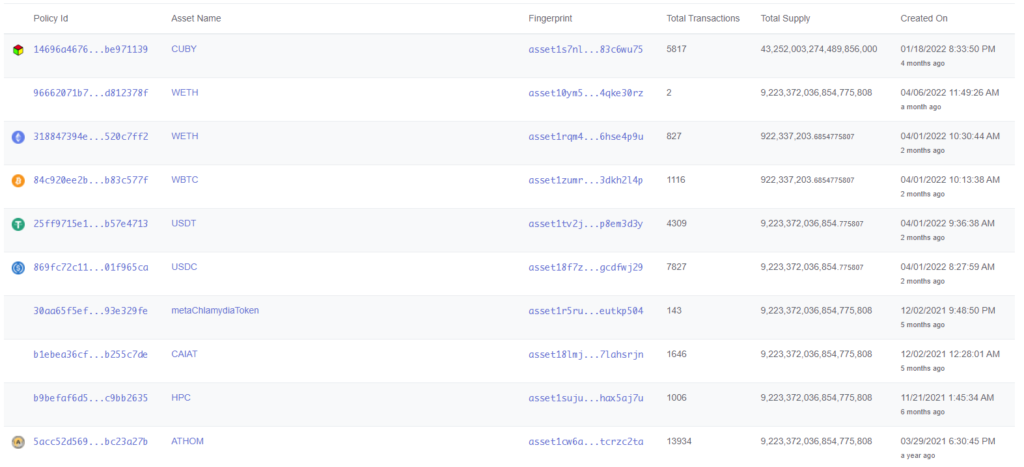
Public Sentiment On Cardano
Cardano’s price action has been in a freefall since September 2021, with the exception of a brief spike in January 2022 when the first dapp launched on the blockchain. This of course must be overlain with the broader macro backdrop, but it has severely underperformed relative to Bitcoin and Ethereum. This indicates a lack of faith in the protocol.


Reddit, the predominant social hub for Cardano, is also stagnating rapidly, down to only a few hundred active users.
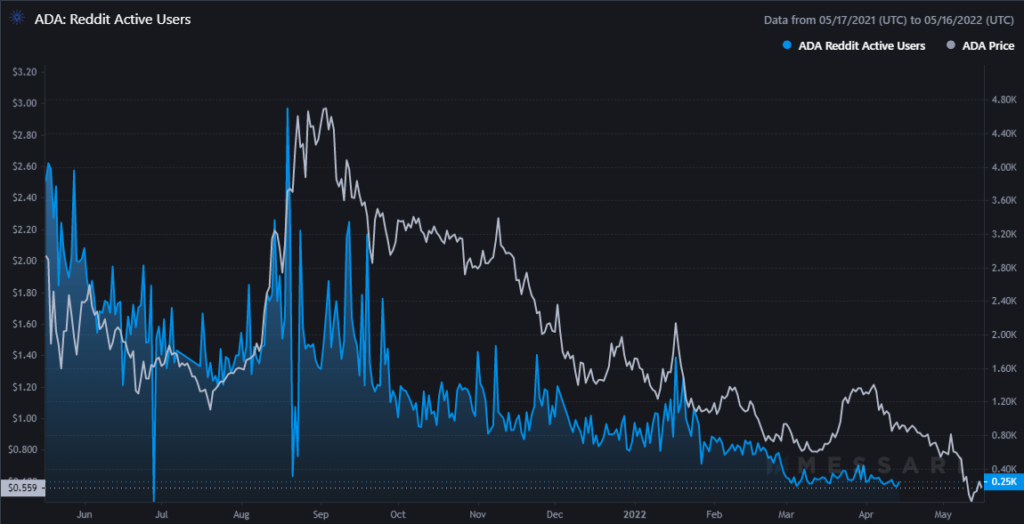
Much more troublingly, the long-awaited launch of smart contracts on the Cardano blockchain was underwhelming. Prior to the launch, much price action and hype was driven by speculation that the smart contracts would be highly functional, even superior to Ethereum. Instead, the network was plagued by technical difficulties, and was very non-performant. Transactions took days to complete.
Is Cardano Dead?
Cardano is not dead yet, but it is dying.
The hype is fading from the protocol. The long-awaited launch of smart contracts led to little actually being built on the chain. Staking percentage is falling, and activity is stagnant. If price falls further, we will see a return to historic low levels, which will likely cause wholesale capitulation.
There are a few notable protocols (like decentralized comms provider World Mobile Token) attempting to build real applications on Cardano. At present, however, the chain acts mostly as a retail trap – attracting unsophisticated investors with a veneer of research and academic credentials, but remaining fundamentally untenable. Only time will tell if founder Charles Hoskinson will be able to breathe new life into his creation, or if it will continue to die a slow death.
Will Cardano go all the way to zero? Who knows. The most likely outcome is that it meets the same end as Bitcoin Cash or Ethereum Classic. No one building on it. No innovation. No real activity to speak of. Just a few traders PvP scalping candles against each other like hyenas picking at the corpse of a hippopotamus.

